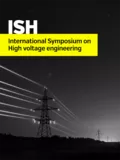Summary
There are approximately 400 000 pole and ground mounted distribution transformers installed on Eskom's almost completely overhead network. The capacity of transformers range from 16kVA single phase open bushing transformers to 1000kVA three phase transformers with cable entries on the lower voltage end. The higher voltage side of the transformers range from 11 kV to 33 kV. The lower voltages range from 242V on single phase systems to 420 V on three phase systems. The failure rate for Eskom's pole and ground mounted distribution transformers is approximately 2.2% and tear downs of failed units have revealed insulation failures between the LV and HV windings, especially during the stormy season. In spite of the lightning protection, eight of the nine operating units with Eskom Distribution suffered their worst performance regarding failures during the summer months when storm and lightning activity increase. (One operating unit suffers its most failures in winter. This is a very densely populated urban environment that suffers from electricity theft and overloading during the winter months). This is especially worrying when one considers that the weather service predicts an increase of onshore lightning strikes of up to 20% in the next decade. One of the possible initiatives to get ahead of the situation and improve network performance is to improve the reliability of transformers on the network with respect to their ability to withstand impulses and other voltage stresses. All of Eskom's pole and ground mounted distribution transformers are manufactured by local suppliers in accordance with the Distribution transformer specification. Historically, type tests were the only marker for product approval and the electrical design was not interrogated to evaluate, amongst other parameters; electric stress in gaps, choice of conductors, homogenous/non-homogenous systems, thermal performance and the insulation system. This resulted in non-optimized transformer designs which became more unreliable as operating conditions became more difficult. Additionally, manufacturers were able reduced safety margins without sanction in order to be more cost competitive. This paper will demonstrate the findings of electrical design reviews performed to understand the poor performance of transformers during periods of increased lightning activity, and will show how the electrical designs were modified to assist in improving reliability. The paper focusses on the dielectric aspect of pole and ground mounted transformer designs.
Additional informations
| Publication type | ISH Collection |
|---|---|
| Reference | ISH2017_258 |
| Publication year | |
| Publisher | ISH |
| File size | 186 KB |
| Pages number | 6 |
| Price for non member | Free |
| Price for member | Free |



